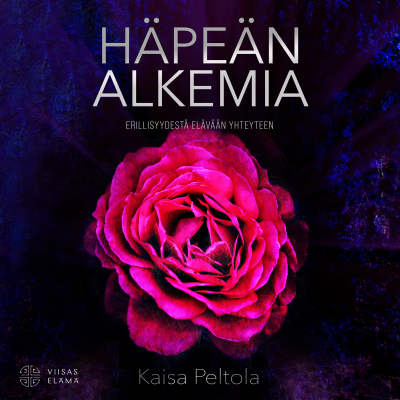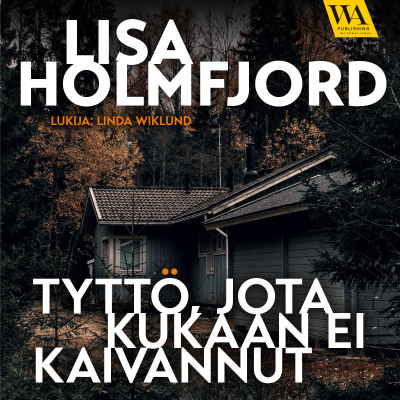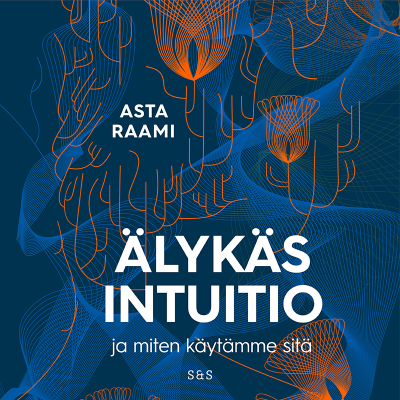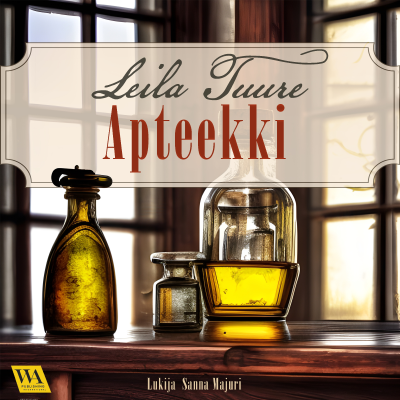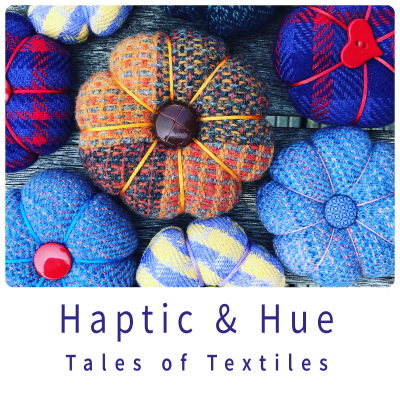
Haptic & Hue
englanti
Kulttuuri & vapaa-aika
Rajoitettu tarjous
3 kuukautta hintaan 1 €
Sitten 7,99 € / kuukausiPeru milloin tahansa.
- Podimon podcastit
- Lataa offline-käyttöön
Lisää Haptic & Hue
Haptic & Hue's Tales of Textiles explores the way in which cloth speaks to us and the impact it has on our lives. It looks at the different light textiles cast on the story of humanity. It thinks about the skills that go into constructing it and what it means to the people who use it.
Kaikki jaksot
69 jaksotAlthea McNish - Queen of Colour
It's nearly five years since the Anglo Trinidadian textile designer, Althea McNish, died in near obscurity in London. In that time her reputation and her standing has grown dramatically and she is now recognized around the world as the one of the first black designers of international standing. There has been a retrospective exhibition of her work, the Victoria & Albert Museum highlights her work, and there is a biography of this remarkable woman in progress. Althea McNish as a designer was a magician of colour, a woman who brought the light and the hues of the Caribbean to a drab post-war London. Queen Elizabeth wore her dress fabrics, cruise liners sailed with her murals on their walls and she changed the lives of millions with her textile designs. This episode takes another look at the life of Althea McNish. For more information about this episode and pictures of the people and places mentioned in this episode please go to https://hapticandhue.com/tales-of-textiles-series-8/ [https://hapticandhue.com/tales-of-textiles-series-8/] And if you would like to find out about Friends of Haptic & Hue with an extra podcast every month hosted by Jo Andrews and Bill Taylor – here's the link: https://hapticandhue.com/join/ [https://hapticandhue.com/join/]
The Dog Hair Blankets of the Coast Salish People
Textiles have a tremendous power to hold our culture and identity, more so than most understand. For thousands of years the Coast Salish people of the Pacific North West, which straddles the border between Canada and the United States, made unique ceremonial blankets and robes from dog hair. Their woolly dogs long pre-dated contact with European colonisers and were specially bred for their lustrous coats. The coverings, which were woven or twined on looms, hold great meaning for the Coast Salish people and are at the centre of their sense of identity, and even lthough the dog hair is no longer available, blankets are still an important part of ceremonies. When colonial administrations on both sides of the border tried to stamp out the culture of the First Nations people, the blankets and robes were burnt, and the dogs that had survived for millennia disappeared, to become just a memory. The very few blankets that do survive are held in museums and no longer belong to the community. But new methods of analysing fibre and textiles are adding to the important oral histories of the Coast Salish families themselves and beginning to tell us more about the woolly dogs, where they came from, what they looked like, how old their lineage is, and how they were bred. This episode is about what happened to the Coast Salish people and how important textiles are to our sense of identity. It is also about valuing both oral accounts and science in a 'two eyed seeing' approach to research. For more information about this episode and pictures of the people and places mentioned in this episode please go to https://hapticandhue.com/tales-of-textiles-series-7/ [https://hapticandhue.com/tales-of-textiles-series-7/]. And if you would like to find out about Friends of Haptic & Hue with an extra podcast every month hosted by Jo Andrews and Bill Taylor – here's the link: https://hapticandhue.com/join/ [https://hapticandhue.com/join/]
Hooky Mats and Rag Rugs: How the Art of Necessity Helped Define a Nation
Hooked rugs are humble things made of recycled cloth and worn out textiles, originally born of need and lack: and yet they have come to mean much more to the communities that produced and enjoyed them. In America they have become an emblem of homespun pioneer thrift and self-reliance and an important element in the definition of a certain kind of national values. Handmade hooked rugs are the stuff of everyday life, but in Canada they became a vital form of income for impoverished seafaring families in Labrador and Newfoundland. And in northern England and southern Scotland they brightened up the hearth of many rural and urban working-class homes. But in the far north of the British Isles a very different tradition developed where sewn pile rugs came to play a role as vital protection for sleeping bodies against night time trolls and witches. Join us as we explore the many forms of hooky, proggy, proddy, clooty, clippy, stobby, and bodgy rugs that have spread around the world. For more information about this episode and pictures of the people and places mentioned in this episode please go to https://hapticandhue.com/tales-of-textiles-series-7/ [https://hapticandhue.com/tales-of-textiles-series-7/]. And if you would like to find out about Friends of Haptic & Hue with an extra podcast every month hosted by Jo Andrews and Bill Taylor – here's the link: https://hapticandhue.com/join/ [https://hapticandhue.com/join/]
The Intelligence of The Hands & The Creative Brain
If you were asked to stitch a picture of your brain what would it look like? A project that looks at the connection between our hands and our brains asked people to do just that. It was aiming to measure creativity and to find out what impact skill and experience has on our actions? These are difficult questions to answer, but this episode of Haptic & Hue looks at what happens to us when we learn activities like knitting, sewing and weaving, how do our hands and brains work together, and which guides the other? About ten years ago a doctor in The Netherlands started what sounds like a simple and practical project. She sent off embroidery kits with a print of the human brain on them and asked participants to stitch a brain. The results, captured in recently published book, are glorious, with a variety of stitched, fringed, appliqued, woven, beaded, woollen, and embroidered brains. Those who took part in the Stitch Your Brain project were being asked to do something complex: to use their handcraft skills to think about their brains and what happens to them when they make. It brought into sharp focus the incredible relationship between our hands and our brains and how we use them together to practice or learn a new textile skill and use it with ease and enjoyment. For more information about this episode and pictures of the people and places mentioned in this episode please go to https://hapticandhue.com/tales-of-textiles-series-7/ [https://hapticandhue.com/tales-of-textiles-series-7/]. And if you would like to find out about Friends of Haptic & Hue with an extra podcast every month hosted by Jo Andrews and Bill Taylor – here's the link: https://hapticandhue.com/join/ [https://hapticandhue.com/join/]
The Mysteries of the Marshes: The Ancient Textile Secrets of Europe's Bog Bodies
If we need proof that textiles can rewrite human history, then it lies with the bog bodies of northern Europe. Textile archaeologists are revealing a whole new past about people who, in some cases, are older than Tutankhamen, but much less celebrated. Across northern Europe there are hundreds of bog bodies, who long ago were buried in marshlands and were preserved down the centuries by acidic conditions and lack of oxygen. We will never know all their secrets, but slowly we are discovering more about who they were, and how they lived. It is their textiles that bring us closer to them and tell us, not just about their skills, but also how they thought and designed cloth and clothing. In Denmark more than a hundred marsh bodies have been found - some in extraordinary states of preservation. They date from the late Bronze and early Iron Ages, and are between 1,500 and 3,000 years old. But what some of them are wearing can take us back much further than that, into a time when humans first started to cover their bodies with clothing. For this episode, Jo travelled to the National Museum of Denmark, in Copenhagen, to explore the textiles of two of the world's most famous bog bodies. For more information about this episode and pictures of the people and places mentioned in this episode please go to https://hapticandhue.com/tales-of-textiles-series-7/ [https://hapticandhue.com/tales-of-textiles-series-7/]. And if you would like to find out about Friends of Haptic & Hue with an extra podcast every month hosted by Jo Andrews and Bill Taylor – here's the link: https://hapticandhue.com/join/ [https://hapticandhue.com/join/]
Valitse tilauksesi
Rajoitettu tarjous
Premium
Podimon podcastit
Lataa offline-käyttöön
Peru milloin tahansa
3 kuukautta hintaan 1 €
Sitten 7,99 € / kuukausi
Premium
20 tuntia äänikirjoja
Podimon podcastit
Lataa offline-käyttöön
Peru milloin tahansa
30 vrk ilmainen kokeilu
Sitten 9,99 € / month
Premium
100 tuntia äänikirjoja
Podimon podcastit
Lataa offline-käyttöön
Peru milloin tahansa
30 vrk ilmainen kokeilu
Sitten 19,99 € / month
3 kuukautta hintaan 1 €. Sitten 7,99 € / kuukausi. Peru milloin tahansa.

















